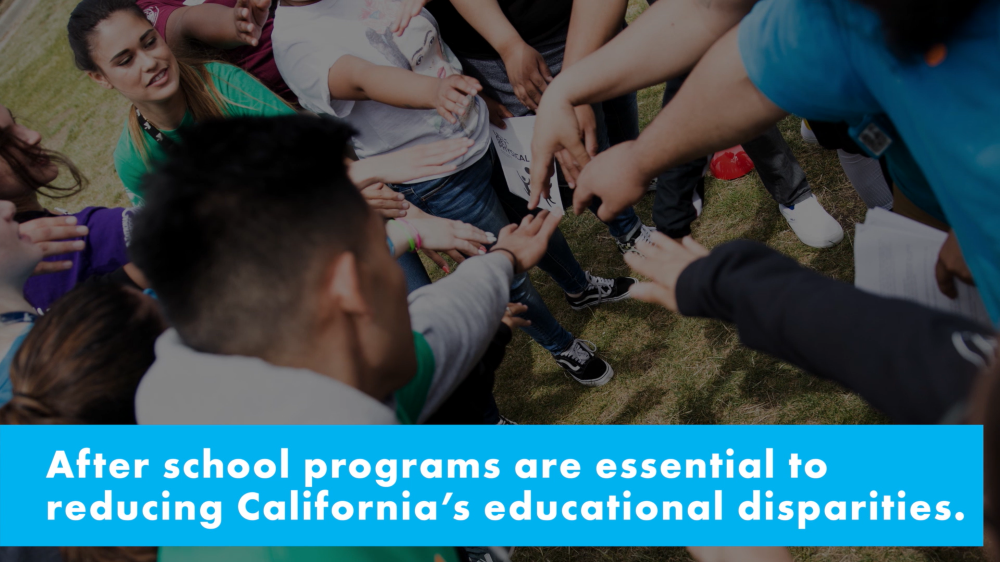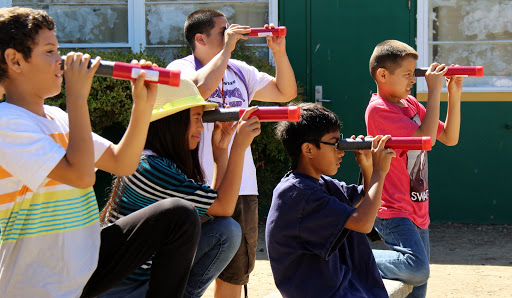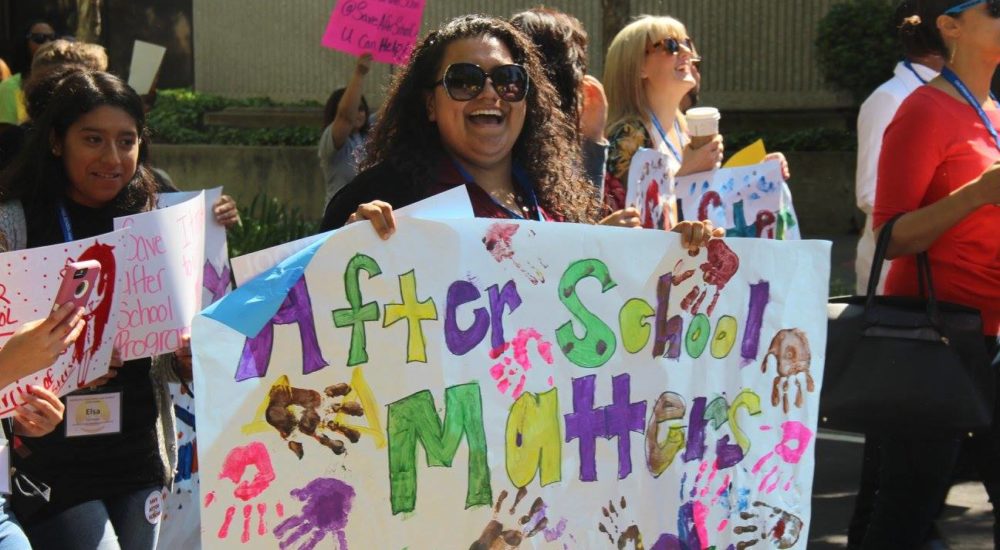Personally, I feel drained by this year’s unpredictability and chaos. I have struggled to balance being present, preparing for what happens next, and not getting lost in too many “what ifs.” Professionally, it’s not much different.
With so many urgent daily needs to take care of, it can be hard to make space to think about what will be needed in 2021 and beyond. So recently I did an experiment: I scheduled 1 hour in my day to pause and reflect on the needs of students and families, as well as the priorities outlined by our local, state, and national leaders. When I did this (during my daughter’s Zoom PE class), I began to define both the opportunity and the challenge faced by the expanded learning community.

Expanded learning programs and their workforce provide an opportunity to:
1 – Deliver foundational needs
Programs are resource and information hubs for students and families, coordinating meal distribution, connectivity, health resources, and other wraparound services.
2 – Support social-emotional well-being
With students experiencing extreme social disconnection and trauma, the 30,000 caring and trained expanded learning staff in California, often from the communities they serve, build consistent and trusted connections with students and families.
3 – Mitigate learning loss
Expanded learning programs provide academic support throughout the year and mitigate learning loss during the summer. Staff work with teachers and administrators to engage students and boost school day attendance, especially in support of English language learners.
4 – Care for young learners
Expanded learning programs are part of the child care continuum that is essential for families to return to the workforce. Staff have been called to the frontlines to supervise and provide in-person support to students even while most classrooms have remained closed.
5 – Close the educational equity gap
Programs serve students and families who have been hit hardest by the current crises (e.g. children of color, families with low-incomes, English language learners, children and youth experiencing homelessness or in the foster care system). 74% of staff live in the communities they serve, and often share the same experiences and backgrounds as the students they serve. Programs and staff are key partners in creating supportive learning communities.
All of this is critical to the recovery of our students and communities, but expanded learning programs and their workforce continue to face a long-standing funding challenge.
We’ve taken incremental steps to help keep programs open, but programs will face increased costs to reopen safely, increased demand from students and families, and another increase in minimum wage in January 2021, all without sufficient funding from the state or federal government to ensure programs can continue to operate. There is no process set up to evaluate the true cost of providing quality service and provide additional funding to respond to the urgent needs of students and families. While expanded learning has maintained broad support in the state legislature, we still fear what could be on the horizon. Will the Governor propose another 15% cut to state-funded programs that could decimate the system?

What comes next? How can we prepare?
Elected officials in our local communities and all the way in Washington, D.C. are preparing their priorities for 2021 and mapping the road to recovery. At the state level, California’s State Legislature has already kicked off their next session and Governor Newsom will release his proposed budget for FY 2021-22 in January.
Elected officials count on their community to educate and inform them about challenges and opportunities they are facing. That is why my colleagues and I in the California Afterschool Advocacy Alliance (CA3) are reaching out to our elected officials in December to share:
- The challenges and needs of the students and families we serve;
- How programs and staff have responded during COVID; and
- Ask them to ensure expanded learning programs and workforce can continue to do this work in 2021 and beyond.
I hope you too can schedule a short break from the urgent needs of the day to prepare for what happens next.
When it comes to the 900,000+ students and families who count on California’s expanded learning programs each year, I hope you can join us in making a phone call or sending an email to your elected officials before the end of 2020 and staying connected to CA3 as we prepare for 2021.
For breakfast, I had oatmeal with fruit (and a tiny slice of leftover chocolate cake).
Author: @jendietrich
